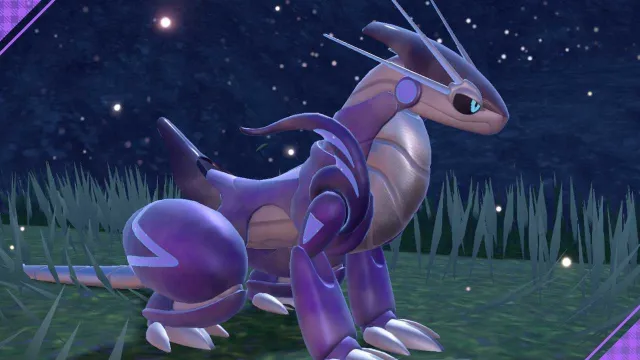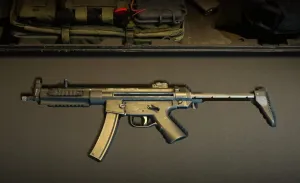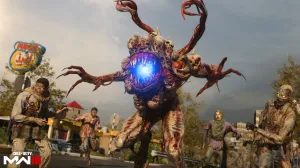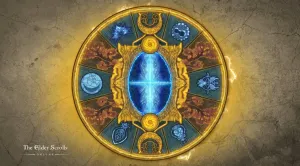If you enjoy fighting games and card games then boy have I got the game for you. The UFS (or “Universal Fighting System”) Collectible Card Game lets you take characters from a bunch of different series and have them battle it out. Franchises like Mega Man, Darkstalkers, King of Fighters, Street Fighter, and the newly released expansion, Mortal Kombat X.
There are also original characters created by Jasco Games that you can play with as well. The best part is you can mix match any cards you want together in your deck. Want to play Ryu with a bunch of Scorpion attacks? Or Mega Man with Morrigan support? You absolutely can! In this article, we are going to go over the basics of UFS to get you ready to play right away.

Getting to know the cards
Let’s start with character cards. These cards will be who you play as during your game. Your character has health (the number inside the circle with the red cross), a hand size (the number inside the circle with green cards), and three resource symbols. Health and hand size are directly related in UFS.
Characters with higher health (Zangief, Goro) tend to have fewer cards in hand, and lower-health characters (Sakura, D’Vorah) tend to have more cards in hand available to make up for it. At the start of your turn, you will always draw until you have the same number of cards listed on your character card.

Resource symbols determine how you’ll build your deck. Each character has three different symbols (Fire, Water, Good, Evil, etc.). All cards in your deck should have at least one symbol in common with your character. Each character can be built off one of those symbols, so think of each symbol as a “skill tree.” The same character can be made in different ways depending on how you want to build your strategy. When you play cards during your turn, each next card you play must have at least one symbol in common with the one before it. As such, it makes sense to put cards that share as many resource symbols with your characters as possible.
UFS does not have a resource system similar to games like Magic The Gathering. Instead, to play cards in UFS you make what is called a “control check.” When a card is played you look at its difficulty rating in the upper left card hand. Then, you take the top card of your deck and discard it. Look at the control rating on the bottom right. If the number is equal to or higher than the difficulty of the card you just played, you have successfully played it. Cards with higher difficulty numbers are harder to play. Just like a fighting game, more complicated moves are harder to pull off. There are ways to help you pay for your cards, but we will get into that in a bit.
Next up we have attacks. Attacks are orange and have speed, damage, and a zone. The speed of an attack is the number in the circle with three arrows. The higher the speed of an attack, the harder it is to block. Then we have damage, the number inside the starburst under the speed. Obviously, the higher the number the more damage an attack does. Lastly, we have zones. There are three arrows next to the speed that correspond to the three different zones, and their respective colors. The top arrow is red for high attacks, the middle arrow is orange for mid attacks, and the bottom arrow is yellow for low attacks. These zones determine how you can block an attack. All cards, not just attacks, can have a block symbol in the top right corner. But not all cards can block. We will get more into that later.

Next up we have foundations. Foundations are grey and represent the training your character has undergone. When you play foundations, at the end of your turn they go into your “staging area” to be used later. When making control checks, if the card you discard for your check isn’t high enough, you can “commit” (turn sideways) your foundations to make up the difference. For example, if you attempt to play a card with a difficulty of five and check a card with a control of three, if you have two foundations, you can commit those foundations to successfully play an attack. Keep in mind, your character card can also be committed to pay for cards. Effects on cards cannot be used when tapped, unless the effect on a card says “playable while committed.”

The two lesser-seen cards are assets and actions. Assets are green and represent the equipment, weapons, locations, and allies a character can use. Like foundations, assets stay in play in your staging area at the end of your turn, but they cannot help pay for cards like foundations. Actions are blue and represent the strategy and tactics a character can use. Actions typically have a one-time-use effect and are discarded at the end of your turn like attacks, but do not deal damage like attacks.


Match basics
Now that you know the cards of UFS, let’s go through a turn to show how the game actually plays out.
You win a game of UFS by lowering your opponent’s health to zero or if your opponent runs out of cards in their deck. Once you determine who will go first, both players draw cards equal to their hand size. You can choose to mulligan and draw a new hand once by putting all cards in your hand at the bottom of your deck, drawing a new hand, and shuffling your deck. The player who goes first starts with their character card committed and cannot attack.
When playing cards in UFS, each card you play goes in your “card pool.” Your card pool can be anywhere on the field, but typically the card pool is placed above your staging area (where foundations and assets are kept).
UFS also has a unique system called “progressive difficulty.” Each card you play becomes harder to do during a turn. Just like in a fighting game, the longer your combo is, the tougher it is to pull off. Each card you play adds one to its difficulty rating. The first card you play in a turn is played for its normal difficulty cost, the next card has one added to its difficulty, two to the next, and so on. Keep in mind that if you fail a control check your turn automatically ends — just like dropping a combo in a fighting game.

Attacking and Blocking
Now let us go into the meat and potatoes of UFS: attacking. When you play an attack and make the control check for it, you and your opponent then go into the enhance step. Many cards have the letter “E” before their effect. These are enhance effects. Starting with the player who played the attack, each player will take turns using enhance effects. Enhance effects can increase your attack speed and damage, lower your opponent’s traits, and much more. Players take turns enhancing until both pass. Then we go into the block step.
As stated before, some cards have block symbols in the upper right-hand corner, with a specific zone (high, medium, or low). You can play a card with a block symbol into your card pool and make a control check like normal in an attempt to block. Most block symbols add to the difficulty when making a control check. Something like +1, +2, etc. The difficulty of the check is the speed of the attack you are attempting to block and the modifier from your card’s block symbol while keeping progressive difficulty in mind. If you successfully make the check, you have blocked the attack. The higher the speed of an attack, the harder it is to block.
If the block symbol on the card matches the zone of the attack, you take no damage from the attack (for instance: a mid block to a mid attack, a high block to a high attack, and a low block to a low attack). You can partially block an attack by blocking with a zone one away from the attack. You can’t block an attack that is more than one zone off from the attack you’re defending against. For example, you can block a low attack with a mid block, but not with a high block. Just like in a fighting game, low attacks must be blocked low, and high attacks must be blocked standing. Mid attacks can be blocked with anything.
If you partially block an attack, you take half damage, rounded up. For example, if an attack takes five damage and then you partially block the attack, you will take three damage.


You can then continue to keep playing cards or end your turn. At the end of your turn, any foundations or assets played are moved down into your staging area. All other cards are discarded. If an attack you played successfully deals damage, it is added to your “momentum.” Just like your super combo meter in a fighting game, momentum does nothing in and of itself, but other cards will reference it and let you use momentum to play stronger abilities.
If you run out of cards, take your discard pile, shuffle it, and discard 10 cards from the top. This is called “cycling” and becomes your new deck. This happens anytime you need to draw or discard a card, and happens immediately. After cycling, you continue gameplay as normal. If after discarding the 10 cards you are left with nothing in the deck, you automatically lose.
In closing
There are more advanced rules, like different keyword abilities and such, but to play a basic game of UFS that is all you need to know! The Mortal Kombat X set releases July 27th, and you can purchase a Scorpion vs. Sub Zero Turbo deck, perfect for two people to play a game right out of the box. For more advanced rules, check out the official UFS rulebook here.
Keep up with Daily Esports for more UFS coverage, including an unboxing video for the Street Fighter expansion, the new Mortal Kombat X expansion, and a demo game perfect for new players to see the flow of a game in real time. Also, we will have a giveaway for an exclusive Street Fighter AND Mortal Kombat X playmat straight from Jasco Games coming up real soon, so stay tuned!
For more info on UFS and the rest of Jasco Games’ products, check them out here.










